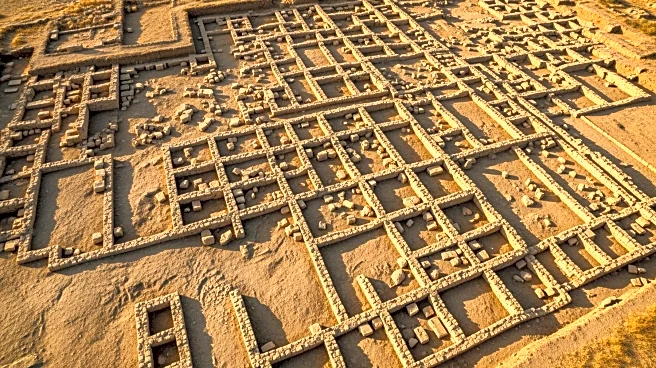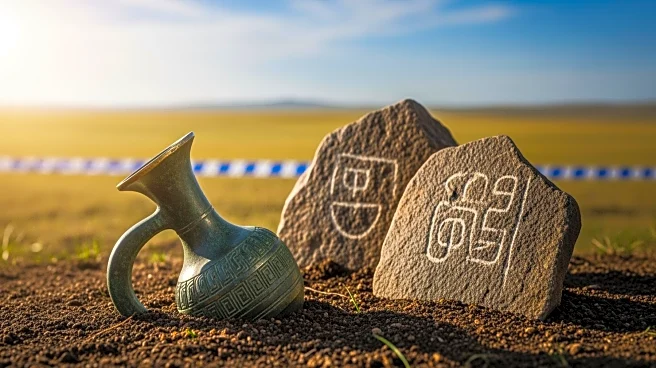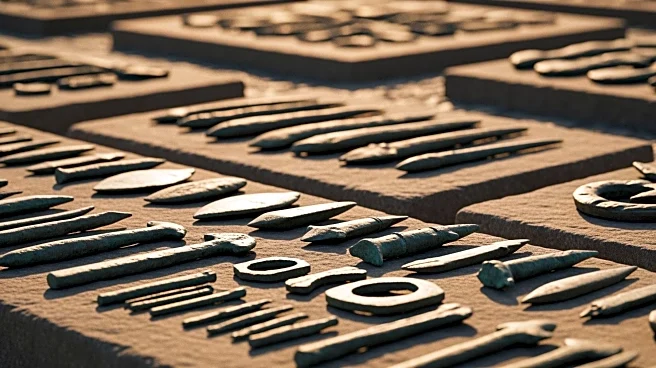What's Happening?
Archaeologists have uncovered a late Bronze Age proto-city on the Kazakh Steppe in north-eastern Kazakhstan, dated to around 1600 BC. The site, known as Semiyarka, spans approximately 140 hectares and
features rectilinear earthworks, enclosed household compounds, and a central monumental building possibly used for rituals or governance. Notably, the site includes a dedicated industrial zone with evidence of bronze alloy production, challenging previous assumptions that such practices were exclusive to sedentary cultures in other regions. The proto-city is culturally linked to the Cherkaskul and Alekseevka-Sargary traditions, overturning the conventional view of the steppes as dominated solely by small, mobile pastoral groups.
Why It's Important?
The discovery of the Semiyarka site provides significant insights into the social organization and technological capabilities of Bronze Age cultures in the Kazakh Steppe. The presence of on-site tin-bronze production suggests a level of industrial sophistication previously unrecognized in this region, highlighting the strategic importance of the site for controlling trade routes due to its proximity to ore-rich areas. This finding challenges existing narratives about the economic and cultural dynamics of steppe societies, offering a new perspective on regional settlement patterns and the development of complex societies in Eurasia.
What's Next?
Further archaeological investigations at Semiyarka are expected to deepen understanding of the site's role in regional trade and cultural exchange during the Bronze Age. Researchers may focus on uncovering more artifacts and structures to better understand the social hierarchy and governance systems in place. Additionally, comparative studies with other Bronze Age sites could provide broader insights into the technological advancements and cultural interactions across Eurasia during this period.











